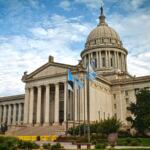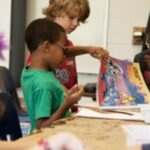August is a month of new beginnings for millions of Americans as students return to school to meet new teachers and find new friends to sit near in class. This August also brings a new question for public school districts that no one would have predicted a year ago: Can public school teachers lead students in religious exercises?
The short answer to that question was and continues to be “no,” at least while on school grounds and during the time they are “on the clock” as school employees. But the question has been complicated by a recent decision from the U.S. Supreme Court that upheld the claim of a public school football coach who sued his employer.
In June 2022, the Court decided the “coach prayer” case, Kennedy v. Bremerton School District. The Court held that the Establishment Clause does not prohibit a coach from kneeling at the 50-yard line immediately following a football game to engage in a brief, personal prayer while students are otherwise occupied. Stated that way, the decision seems like an appropriate approach to thorny constitutional issues when the rights of both students and teachers are at stake.
The problem with the Court’s curated narrative, however, is that it dismisses the coach’s multi-year practice of leading players in pre-game prayers in the locker room, giving religious motivational speeches and including students in post-game 50-yard line prayers.
In a rare move, the dissent in the case includes photographs showing the facts ignored by the majority: it contains three pictures of the coach surrounded by players from both teams for his “personal” post-game prayer.
This discrepancy between the majority’s description of the coach’s prayer practice and the photographic evidence of his practice has introduced confusion into what had been a commonsense and constitutional protection of religious freedom for public school students: Public school officials, in their capacity as government employees, cannot lead students in prayer or other religious exercises.
In ruling for the coach, the Court majority accepted that he had abandoned his prior practices of leading students in prayer and giving religious speeches and instead narrowed its focus to the constitutionality of his “request to offer a brief prayer on the field while students were busy with other activities.”
Public school students and families still have the right to be free from school-sponsored religious exercises and indoctrination in the public school system, as well as religious coercion from school employees. At least, for now.
In this first school year after the Kennedy decision, it is too early to know the full impact of the decision on our public schools.
School districts may need to review any policies on religious expression by employees at school. Administrators, teachers and coaches are still barred from leading students in prayer in the course of their duties, but these officials may engage in personal religious practices at times when they can engage in other personal activity and students are otherwise engaged.
School districts should retain or create robust policies explicitly protecting the religious freedom of students and reminding them of their rights. Students have the right to engage in voluntary, student-led and student-initiated religious exercises that do not interrupt classes. They also have the right not to be coerced into religious practice through teacher-led or other school-sponsored religious exercises.
Public school administrators may want to consider adding instruction on religious expression in public schools to future teacher in-service training. While many topics compete for space in these trainings, discussing the role of public school teachers in protecting religious freedom for America’s schoolchildren needs to be on the agenda.
Our public schools protect the constitutional rights of students and teachers but cannot do it alone. Those of us who believe in faith freedom for all should work alongside public school officials to help them achieve their mission. We can attend school board meetings to support policies and curricula that reflect the diversity within our communities. Houses of worship can support teachers and principals by building relationships as good neighbors and responding to the needs of their local schools.
Public schools are essential to the great American experiment that all people are created equal. They are among our most diverse institutions in American society reflecting the religious, ethnic, racial and socio-economic diversity within our communities. They are our training ground where we learn to live, work and play with neighbors despite deep differences between us.
Robust public schools build vital communities, and we should do our part to help our public schools navigate their role as defenders of religious freedom for all.
Editor’s note: This article is the first in a series this week focused on public education.





